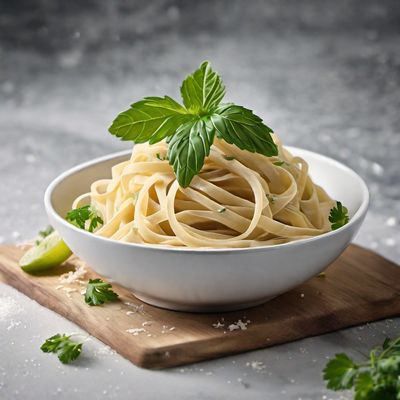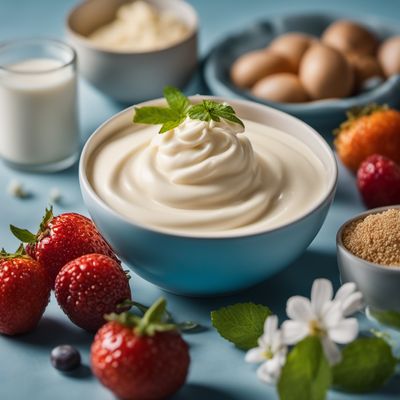
Ingredient
Cream and cream products
The Creamy Delight: Unveiling the Versatility of Cream and Cream Products
Cream is a dairy product that is obtained by skimming the fatty layer from fresh milk. It is characterized by its high fat content, typically ranging from 18% to 40%. Cream has a smooth and velvety texture, with a pale white or yellowish color. It adds a luscious richness to dishes and can be whipped to create a light and airy texture. Cream products include various forms such as heavy cream, light cream, half-and-half, and sour cream, each with its own unique characteristics and culinary applications. The higher the fat content, the richer and creamier the taste and texture of the cream.
Origins and history
The use of cream in culinary practices dates back centuries, with its origins traced to ancient civilizations such as Egypt and Mesopotamia. Cream has been an integral part of European cuisine for centuries, particularly in countries like France and Italy, where it is used in traditional dishes like crème brûlée and carbonara. The availability of cream was historically limited to regions with dairy farming, but with advancements in transportation and refrigeration, cream has become widely accessible worldwide.
Nutritional information
Cream is a calorie-dense ingredient, with approximately 52 calories per tablespoon. It is a significant source of fat, providing around 5 grams of fat per tablespoon. Cream also contains small amounts of protein, carbohydrates, and essential vitamins such as vitamin A and vitamin D.
Allergens
Cream is a dairy product and may contain lactose, making it unsuitable for individuals with lactose intolerance or dairy allergies.
How to select
When selecting cream, look for products with a smooth and creamy consistency, free from any lumps or curdling. Check the expiration date to ensure freshness. Opt for organic or grass-fed cream for a higher quality and more flavorful product.
Storage recommendations
Cream should be stored in the refrigerator at a temperature between 35°F to 40°F (2°C to 4°C). It is best to keep cream in its original container, tightly sealed, and away from strong-smelling foods to prevent absorption of odors. Once opened, use the cream within a week for optimal freshness.
How to produce
Cream is produced by separating the fatty layer from fresh milk. This can be done at home by allowing fresh milk to sit undisturbed for a few hours until the cream rises to the top. The cream can then be skimmed off using a spoon or a separator.
Preparation tips
To whip cream, ensure that the cream and the mixing bowl are chilled. Use an electric mixer or a whisk to beat the cream until it reaches a soft or stiff peak, depending on the desired consistency. Avoid overbeating, as it can result in the cream turning into butter. Cream can be added to soups, sauces, desserts, and beverages to enhance their flavor and texture. When using cream in hot dishes, it is important to avoid boiling it, as it may cause curdling.
Culinary uses
Cream is a versatile ingredient used in both sweet and savory dishes. It is commonly used in desserts such as ice cream, custards, and mousses, adding a creamy and luxurious texture. Cream is also a key component in sauces, soups, and stews, providing richness and depth of flavor. It can be whipped and sweetened to create whipped cream for topping desserts or used as a base for buttercream frosting. Additionally, cream is often added to coffee, tea, and hot chocolate to enhance their taste and creaminess.
Availability
Cream and cream products are commonly available in countries with a strong dairy industry, such as the United States, Canada, European countries, and Australia.
More ingredients from this category
Recipes using Cream and cream products

Haute Cuisine Bangers and Mash
Elevated Sausages and Mashed Potatoes

Polish-style Chicken Korma
Creamy Chicken Delight: A Polish Twist on Indian Korma

Fettuccine Burro e Parmigiano with a Molecular Twist
Parmesan Cloud Fettuccine with Butter Emulsion

Nouvelle Cuisine Pasta Carbonara
Elevated Carbonara Delight

Dulce de Leche with a Nordic Twist
Nordic Caramel Delight

Sachertorte with a Molecular Twist
The Ultimate Sachertorte Experience: A Molecular Gastronomy Adventure

Molecular Gastronomy Bangers and Mash
Savory Sausages and Creamy Potato Foam

Malvani Walnut Cake
Spiced Walnut Delight: A Malvani Twist to the Classic Cake


